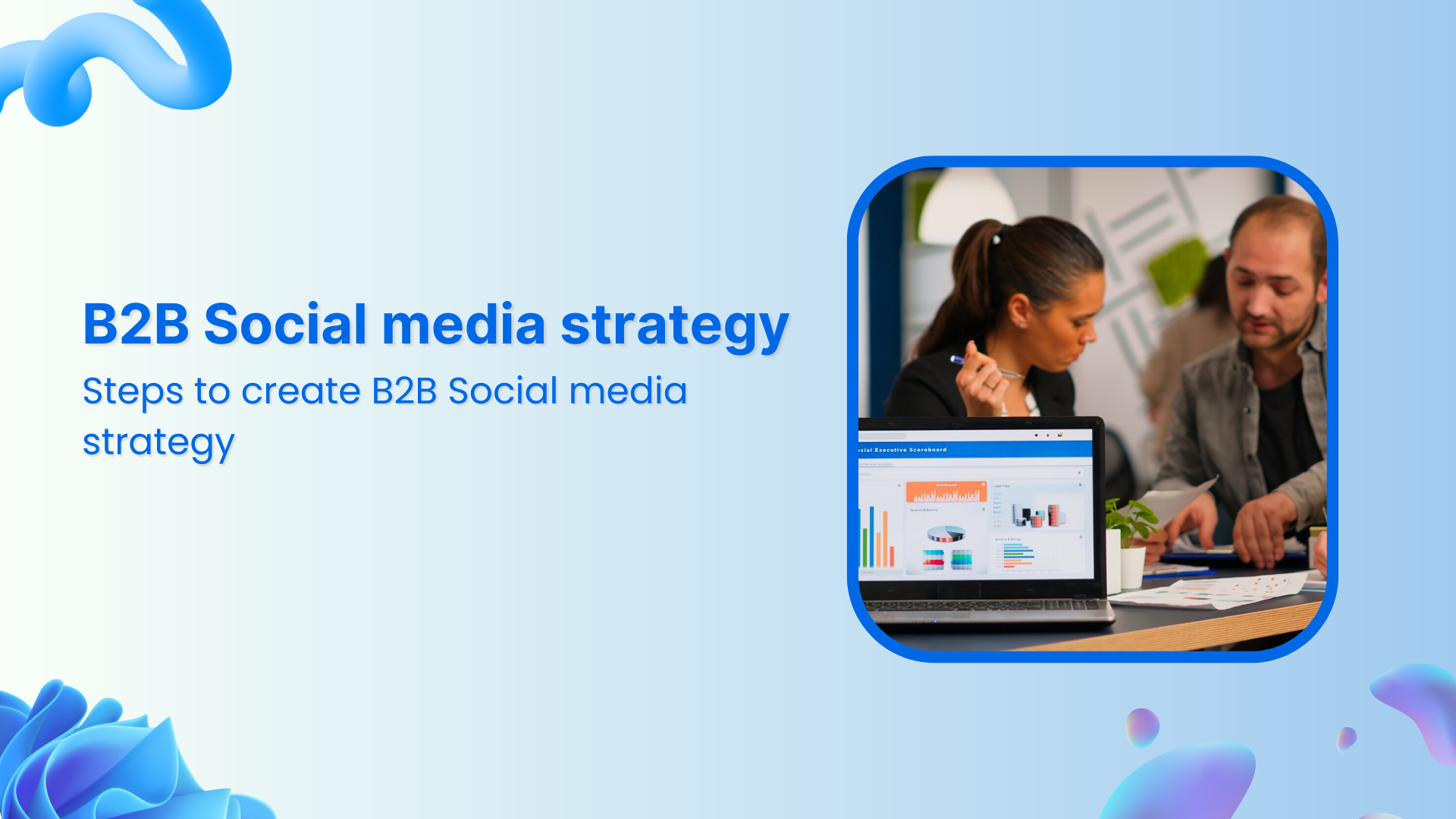With so much business happening online these days, having a strong social media presence is no longer optional for B2B companies; it’s essential. However, unlike B2C brands that often thrive on viral trends and impulse buys, B2B success on social media hinges on trust, thought leadership, and long-term relationships. That’s where a well-crafted strategy comes in. Without one, your efforts can quickly become scattered, inconsistent, or worse, ignored by the audience you’re trying to reach.
Whether you aim to generate leads, boost brand awareness, or position your business as an industry expert, your social media strategy must be intentional and data-driven. Every decision counts, from selecting the right platforms to aligning with broader business goals. In this guide, we’ll walk you through the key steps to build a B2B social media strategy that actually works and drives results that matter.
Simplified social media marketing for individuals & agencies.
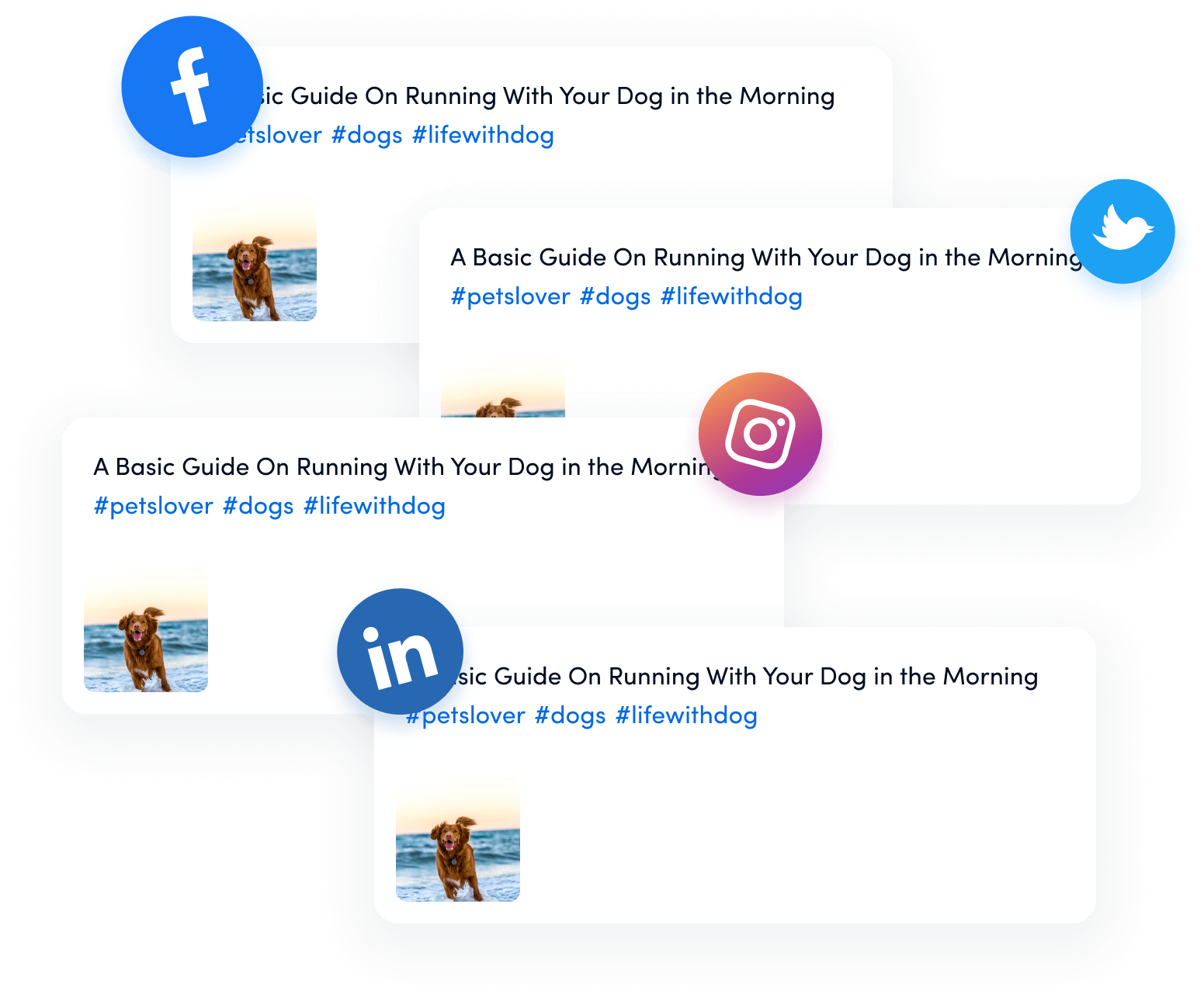
What is B2B social media marketing?
B2B social media marketing uses social media platforms to promote products or services from one business to another. Unlike B2C marketing, which often focuses on quick conversions and broad appeal, B2B marketing is about building relationships, sharing expertise, and guiding decision-makers through longer buying cycles.
The most common platforms for B2B marketing include LinkedIn, Twitter (X), and increasingly, Facebook and YouTube. LinkedIn, in particular, is a powerhouse for B2B marketers, offering direct access to professionals, industry leaders, and business communities. Twitter (X) helps brands join relevant conversations in real time, while YouTube supports in-depth education and storytelling through video. Even Instagram is gaining ground for behind-the-scenes content and company culture highlights.
It’s not just about being present on LinkedIn or Twitter. It’s about showing up with purpose. That could mean sharing industry insights, highlighting customer success stories, or engaging with relevant conversations in your niche. The goal is to position your brand as a trusted resource, not just a vendor.
3 key factors of a social media strategy
-
Building a brand persona
It’s essential to have a clear brand persona in mind. It includes but is not limited to being aware of the company’s targets, standards, and mission.
The social media team must be crystal clear on what businesses need to reach out to through social media content. This will help them immensely in creating targeted content for the right audience.
-
Engaging the audience
Engagement is the key to starting conversations, which creates opportunities for lead generation and social media attention.
Hone in on the art of engaging the audience through your content. It won’t make a difference if you show up to paste your blog post links on social media and walk away.
Instead, ask questions on social media, answer through fresh content, encourage followers to comment on your content, and establish a Facebook group for community building.
-
Making an impact
If your social media presence and all types of content aren’t making an impact, meaning they’re not helping the audience, then it requires some tweaks. To fix this problem, you must engage the audience and try to find their pain points.
Content marketing isn’t about creating content just because you can sell your product. Instead, one of the pillars of content marketing is being helpful to the audience.
So keep these key factors in mind while hopping on social media networks from a business standpoint.
Steps to create a B2B social media strategy:
1. Set smart goals to guide your strategy
Start with the end in mind. What do you want to achieve through social media? Are you aiming to generate leads, increase brand awareness, drive website traffic, or support customer retention? Clear, measurable goals help shape the direction of your content and campaigns.
To define success, use the SMART framework—Specific, Measurable, Achievable, Relevant, and Time-bound.
For example, instead of vaguely aiming to “grow your presence,” a SMART goal could be: “Increase our X followers by 30% over the next 6 months.” This goal is specific (follower growth on X), measurable (30% increase), achievable (with the right content and engagement strategy), relevant (to boosting B2B visibility), and time-bound (within a 6-month window).
SMART goals help you stay focused, set priorities, and evaluate performance effectively. They also ensure your social media efforts are aligned with broader business objectives, so every post and campaign has a clear purpose.
2. Point out a population segment to tap on
Once it’s been identified that a social media strategy is being designed for a B2B business, the next step is to determine the population segment that could be potential customers.
Since a B2B business looks to other businesses to solve a specific problem, this would reflect on its overall social media marketing campaign.
Let’s not make it over-complex:
- Comprehend what type of businesses need your product
- Understand their pain points to solve through your product
- Identify the keywords to capitalize on
- Pick the right topics to create content
- Write the perfect website copy
DesignCap is an online graphics design tool. Take a look at the screenshot from their website:

You can look at the line that reads, “make striking graphic designs for your business, event, social media, and more.”
It shows that they’re pointing out their population segment, telling business owners, event organizers, and social media users to use this tool to design their graphics using this online tool.
Related Read: How to design social media posts
3. Figure out where your target audience exists on social media
While there’s value in being visible across multiple platforms and even jumping on new ones early, more isn’t always better. Spreading yourself too thin can lead to inconsistent content and burnout. Instead, focus on mastering one platform at a time before expanding.
Each social channel has its own tone, audience behavior, and content style. Trying to deeply engage on all of them at once can dilute your efforts. Starting with one core platform, you can build a strong presence and repurpose that content for others as you grow.
So, how do you choose the right platform for your B2B business? Start by identifying where your potential buyers are most active and where they go to research solutions like yours. That’s where your focus should be. Quality engagement on the right platform will consistently outperform surface-level activity on every platform.
Go through the following areas/features of the social media networks and look out for the target audience:
Facebook groups
Start exploring Facebook groups related to your industry and see what people are discussing. It’ll hint about whether or not Facebook is a great fit for your social media marketing. Don’t stop there, but instead, create your company’s Facebook group too. Invite your customers, email list subscribers, and social media followers to form an online community.
LinkedIn company pages
LinkedIn has a page feature for companies. Don’t hesitate to follow a bunch of industry-related company pages on LinkedIn. Ultimately, you’d need to build one for your company to see how it works out for your social media campaign.
Twitter (X) hashtags
Twitter (X) hashtags are relatively underutilized as far as finding the target audience on social media just like Twitter header size which can actually help you win a huge amount of followers. Use the Twitter search with your industry-specific hashtags and see what people are saying. Don’t restrain yourself from hopping on Twitter and tweeting a few replies to the relevant tweets. Social media is all about helping the community, anyway.
YouTube videos
YouTube is the second most popular search engine on the internet. You should search for the keywords and topics related to your industry and see what competitors are doing. It’ll also help you identify underserved areas that you can fill in. Furthermore, you can go through the comments on competitors’ content to see what people want to know or are struggling with. It’ll give you a perspective on what your audience wants. Using Youtube to grow your brand is a great idea to look for.
Instagram search
Instagram search is another forum for identifying the target audience. Use industry-related Instagram hashtags to explore the Instagram search page. Try landing on relevant accounts through useful posts and take inspiration from others’ Instagram posts. However, the goal is to understand what people are liking; don’t overlook the audience’s behavior on this platform.
Quora questions
Quora is a fantastic avenue to find a niche audience. Since it’s the number one site for asking questions, try searching for the items/topics that could help you understand the population segment’s pain points.
The above-mentioned social media features will help you get one step closer to figuring out where your target audience exists. However, you won’t necessarily find the right audience everywhere you hunt on social media.
4. Choose the right types of content to put out
Choosing the right types of content to put out is essential, which means that everyone shouldn’t create all types of content.
You might wonder how you’d know what type of content is the right fit for your business. Here are four factors in deciding the right type of content to put out:
Content demand
It’s essential to do some digging to determine the demand for different content types. If you’re a social media geek, you’d know that YouTube Shorts, Facebook, and Instagram reels are hot. People love reels, stories, and other videos on every social media platform.
Similarly, people might love 5-minute funny dog compilation videos, but won’t be interested in an hour-long rice crop-harvesting audio podcast. So, try to sort out the content that suits you best for your social media strategy.
Read Up: YouTube Shorts vs Instagram Reels: A complete comparison

Discover Relevant, Trending And Engaging Content
Monitor content by keywords, topics or sources of your interest. Curate content that drives engagement on all of your channels.
14 days free trial – no credit card requiredAudience attention
Audience attention is a massive signal of what they want to consume. If your specific content type is getting a lot of traction, it shows it’s getting the audience’s attention. Suppose you’re a web design agency and only focus on the articles in your content marketing strategy.
On the other hand, your competitors are using articles and video tutorials on Facebook and YouTube. If you notice that they’re getting views on YouTube and Facebook, it shows they have the audience’s attention.
You don’t have to copy your competitors blindly; instead, do your own testing and see what’s working for you. You could leverage Instagram video better than YouTube to attract and engage more website design prospects.
Product placement
Great content is a fundamental content marketing ingredient, but remember that it takes money, sweat, and energy to create great content. Don’t ever compromise on the quality of your content. All you need to do is naturally integrate your product or service into the content so that you can make the most of your content marketing.
These factors will help you decide on the right type of content to focus on.
There are influencers out there who are good at this, meaning they’re crushing it with the specific type of social media content.
John Lee Dumas knows about this.
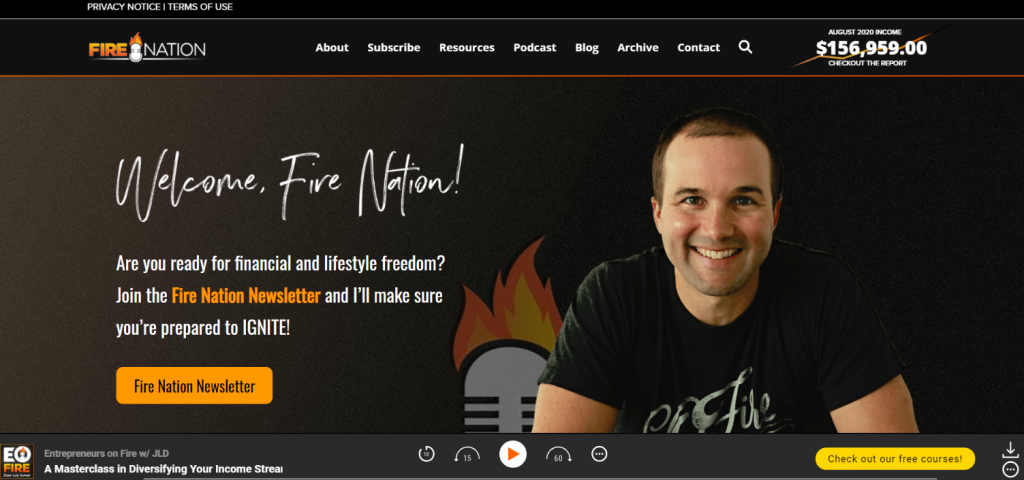
He has established his brand, EOFire, around podcasting. His podcast is among the top podcasts in the entrepreneurship and business genre.
It’s okay if putting videos on the internet isn’t your cup of tea; you could try podcasting, images, or articles.
Pay close attention to the correct type of content that helps you reach prospective clients and loyal fans. However, content quality doesn’t matter if it isn’t delivered to the right audience. Therefore, choose the right type of content to get started.
5. Create a content calendar
Think of your content calendar as the bridge between strategy and execution. Once you’ve defined your overall marketing goals, chosen your social platforms, and outlined your content pillars, it’s time to roll up your sleeves and start creating.
A smart way to stay ahead is by batch-creating content—whether for a week or a month—and scheduling it in advance using tools like ContentStudio. This helps you maintain consistency without the stress of daily posting. With ContentStudio, for example, you can plan your content in advance, queue up posts across different platforms, and free up time for engagement and strategy.
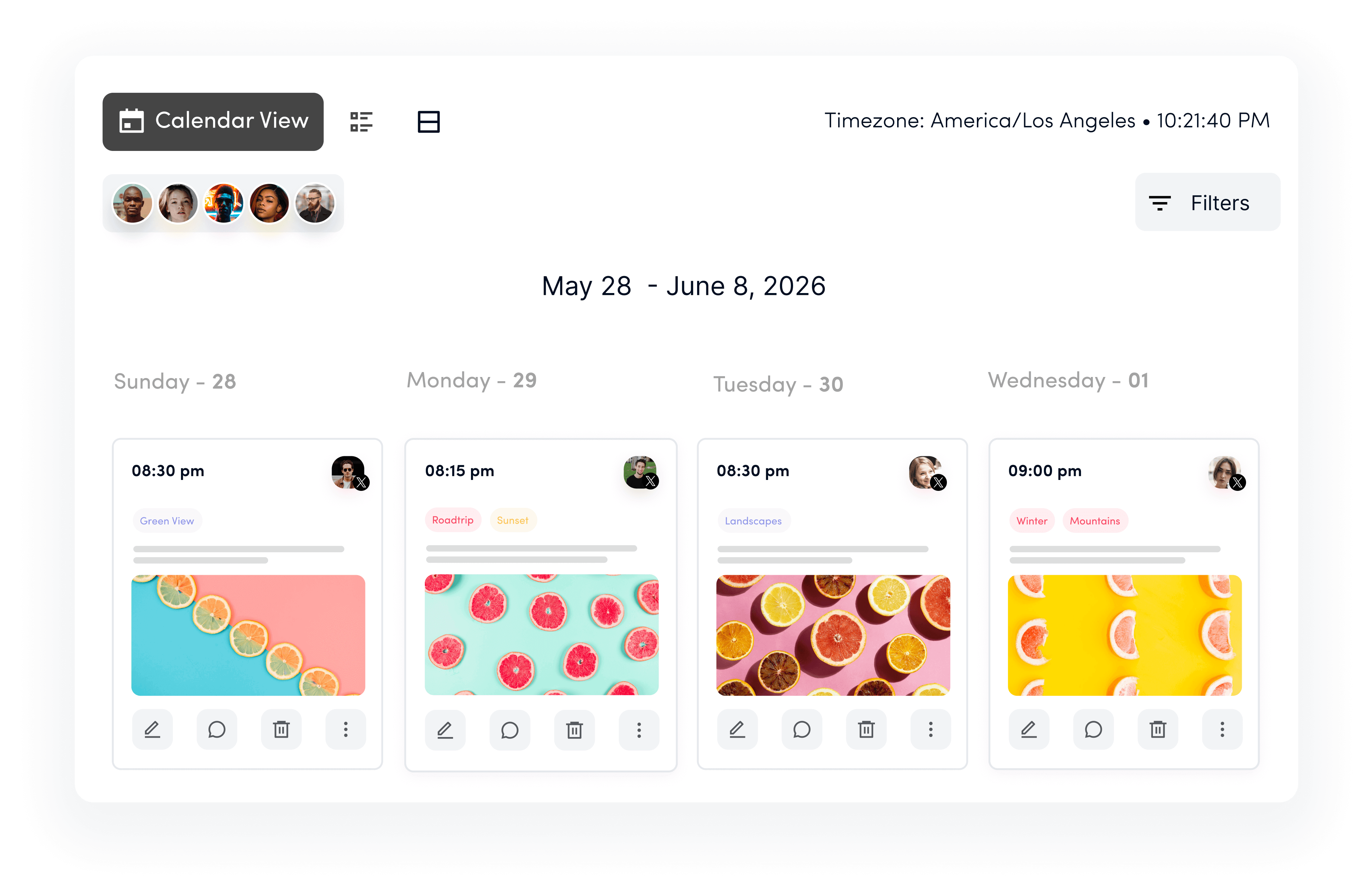
Pro tip: Leave room for flexibility. Not everything can be planned. Keep some space in your calendar for reactive content, like trending topics or breaking industry news worth following quickly.
Another tip: Don’t overlook the predictable moments in your audience’s calendar. For instance, if you offer accounting software, plan for key tax deadlines with timely reminders or helpful tips. These small, relevant touches can go a long way in building trust and value.
6. Analyze your content and social media strategies
Monitoring your social media performance is key to understanding what truly connects with your audience. The right insights can reveal powerful patterns, like which topics consistently boost your follower count or spark the most engagement, giving you a clearer picture of what resonates.
Tools like ContentStudio make it easy to access this data in just a few clicks. You can identify top-performing posts, discover the best times to post, and generate professional, branded reports to share with your team or stakeholders.
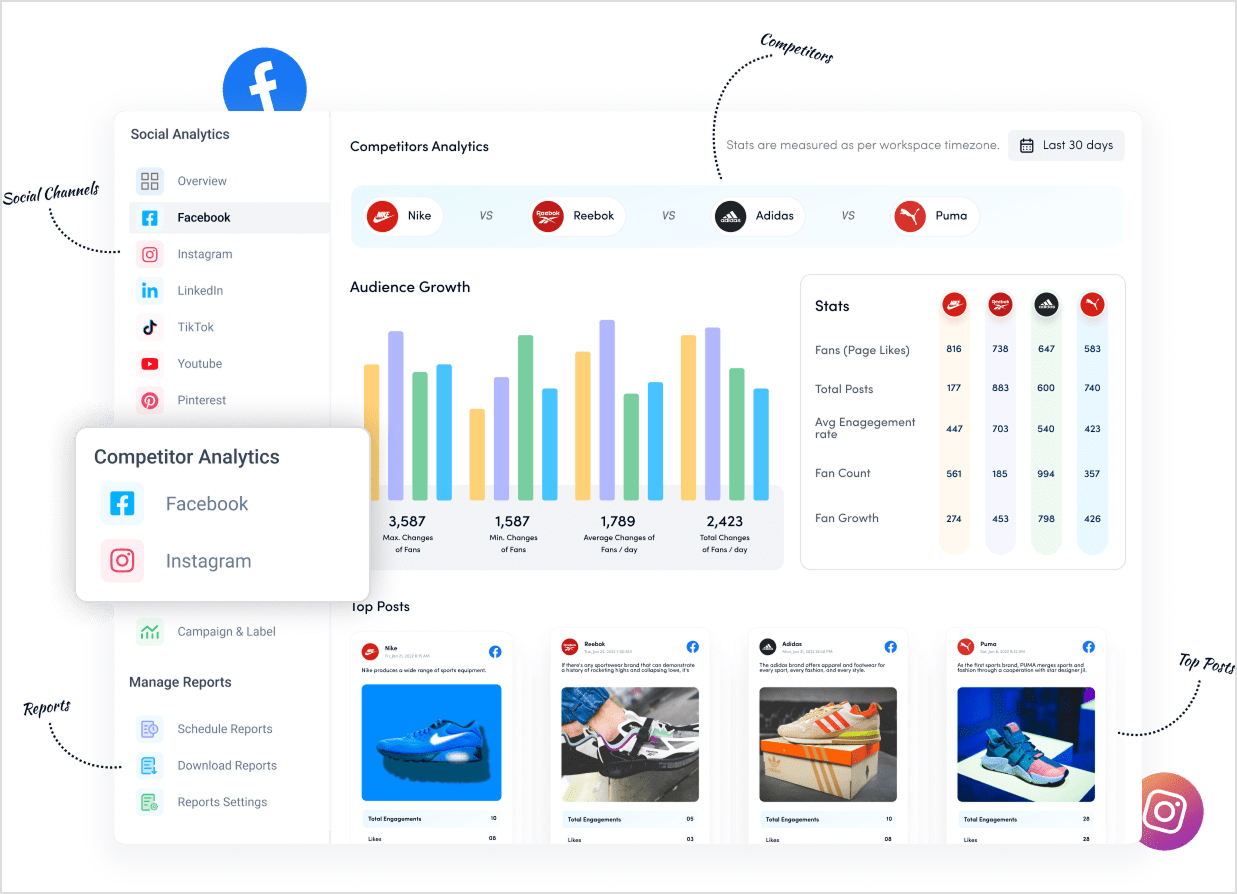
However, insights are only valuable if you act on them. Let your analytics guide your strategy; double down on what’s working, and don’t be afraid to pivot when something isn’t. If a content pillar or format repeatedly underperforms, it may be time to drop it or refine your approach.
Don’t overlook competitor analytics. Tracking what similar businesses are doing on social media can help you spot content gaps, discover new opportunities, and benchmark your performance. Analyze what kind of posts are getting traction for them, and consider how you can add your own spin to offer more value.

Make it a habit to review your analytics regularly. The more you understand your audience’s behavior, the better you can build content that fosters real connections and drives long-term results.
The following are the metrics that will determine the success or failure of your social media and content strategies:
Reach and impressions
- Reach shows how many unique users have seen your content.
- Impressions reflect how often your content is displayed (even if to the same person multiple times).
These help you gauge content visibility and brand awareness.
Follower growth
A growing audience can indicate that your brand is gaining relevance and trust in your niche. Monitor which types of posts lead to spikes in followers.
Engagement rate
This includes likes, comments, shares, saves, and overall interaction with your content. High engagement means your content resonates and sparks conversations, especially in B2B, where relationship-building is key.

Conversion rate
When tactics such as content marketing and social media marketing start to work, they reflect on the conversion rate. You’d notice that you’re generating leads and converting visitors into customers. So the conversion rate is an essential metric for analyzing how content and social media strategies are performing.
Content performance by type or pillar
Identify which formats (video, carousel, infographic) and content themes (educational, promotional, behind-the-scenes) perform best. This helps you double down on what works.
By consistently monitoring these metrics, you can identify what’s moving the needle—and what needs adjusting. The key isn’t just tracking numbers, but using them to make smarter, more informed decisions.

Analyze, Understand, and Improve Your Social Strategy
Stack your key social metrics against those of your competitors and make targeted steps towards social media success.
14 days free trial – no credit card requiredWhat type of social media posts work best for B2B?
When it comes to B2B social media, the goal isn’t just to entertain, it’s to educate, build trust, and drive action. That doesn’t mean your posts have to be dry or overly formal. The key is finding the sweet spot between value and relatability. Here are the top-performing types of B2B content to include in your mix:
1. Educational & how-to posts
B2B audiences are often looking for solutions or insights to improve their workflows. Posts that break down complex topics, explain how to do something, or provide step-by-step tips tend to perform well.
Have a look at how ContentStudio does that through its blog:

2. Customer success stories & case studies
Nothing builds trust like proof. Highlight how your product or service solved a real problem for a customer. It’s social proof with a storytelling twist.
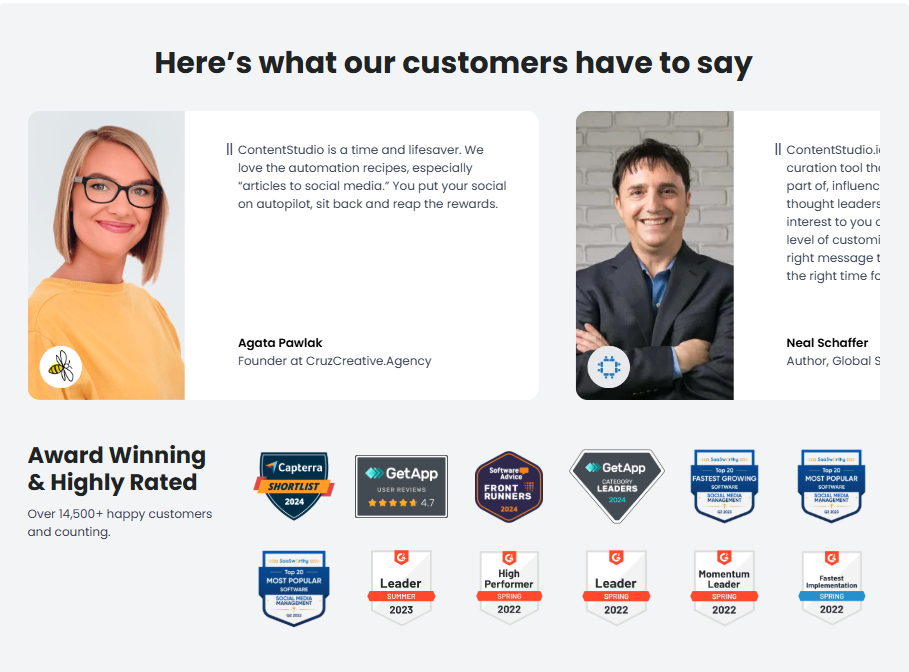
3. Behind-the-scenes or culture content
Even in B2B, people connect with people. Show the human side of your business with posts about your team, company values, or day-to-day life. It helps build rapport and brand personality.
4. Product updates & feature highlights
Use your social channels to introduce new features, share product tips, or highlight use cases. Just make sure they focus on the user’s value—not just what’s new.
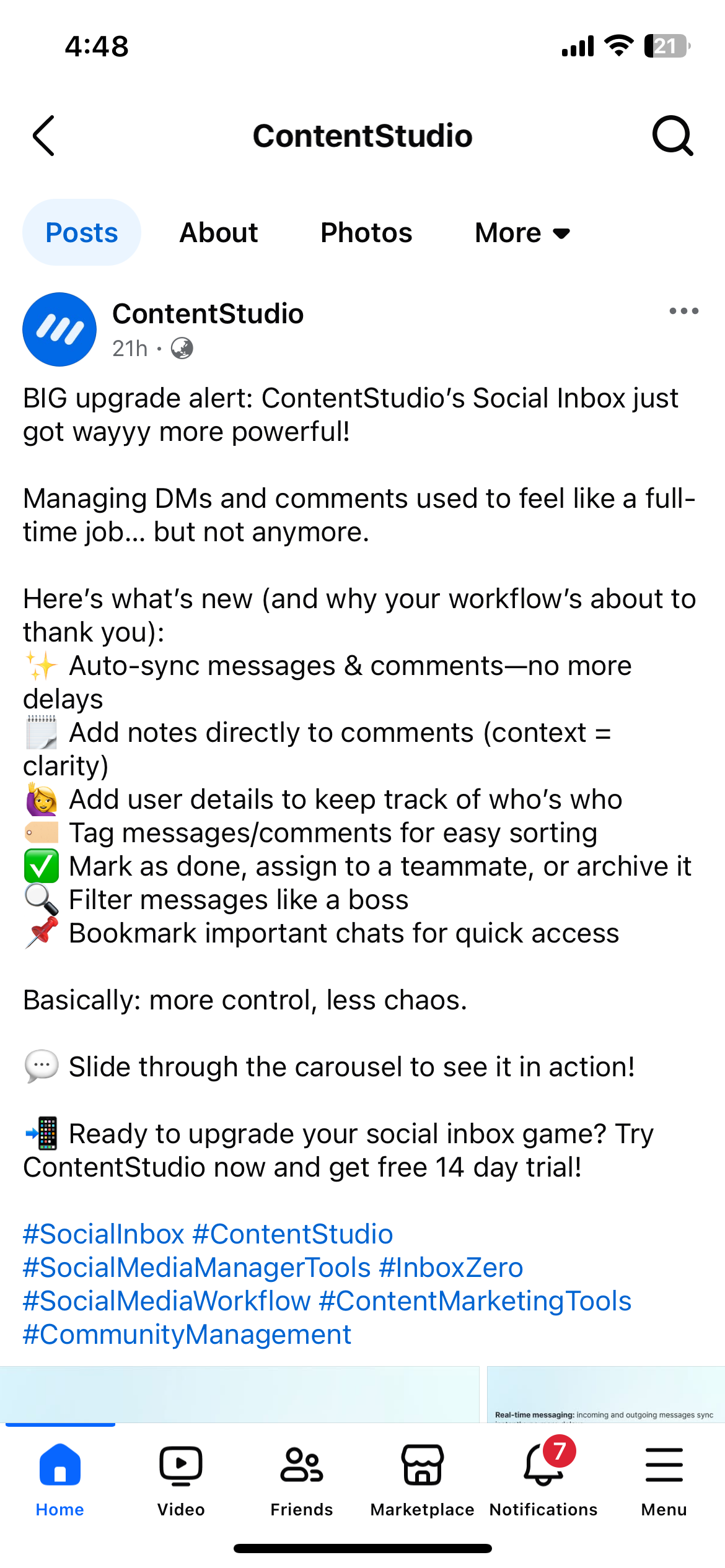
5. Curated content & partnerships
Not every post needs to be original. Sharing high-quality, relevant content from trusted sources (with your take on it) adds value without reinventing the wheel. Also, spotlighting partners and collaborators helps extend your reach.
Example:
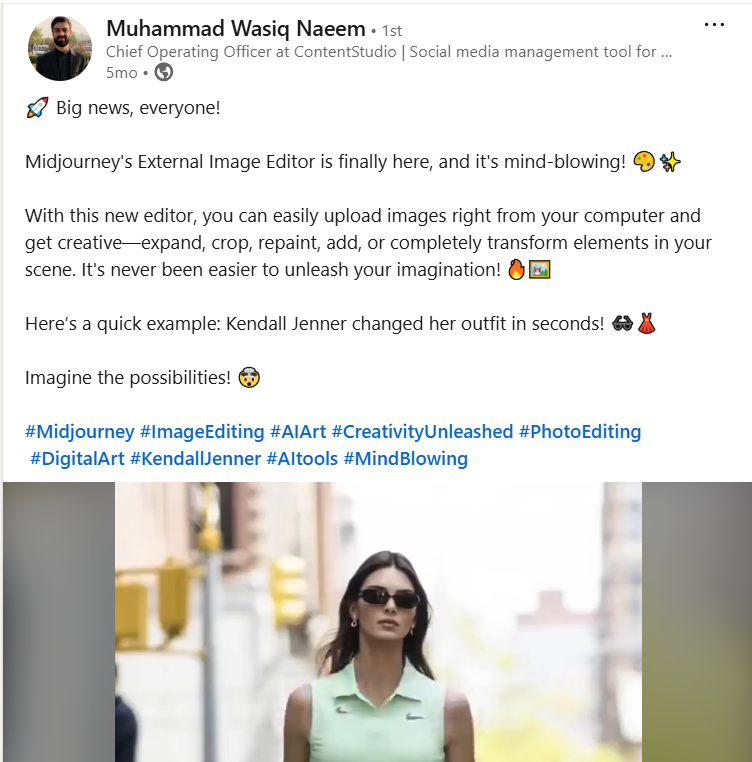
Are you ready to build a B2B social media strategy?
Crafting a successful B2B social media strategy takes more than just showing up—it requires clarity, consistency, and a deep understanding of your audience. From setting SMART goals to choosing the right platforms, creating valuable content, and analyzing performance, each step drives real business results.
Remember, social media isn’t just for visibility; it’s a powerful channel for building trust, generating leads, and nurturing long-term relationships. Stay agile, keep experimenting, and let data guide your decisions. With the right strategy in place, your B2B brand can thrive in the ever-evolving world of social media.
FAQs
How to build a B2B social media marketing strategy?
Set smart goals to guide your strategy, point out a population segment to tap on, choose the right types of content to put out, create a content calendar, analyze your content and social media strategies.
Which platform is best for B2B social media marketing?
LinkedIn is the best platform for B2B social media marketing.
How many social media platforms should a B2B company use?
It’s better to focus on a few high-impact platforms where your target audience is most active, rather than spreading yourself thin across every channel. LinkedIn is often a must for B2B, while Twitter, Facebook, YouTube, and Instagram can also be valuable depending on your industry. Start with one or two, and expand as you build capacity and clarity on what works.
How do I measure the ROI of my B2B social media efforts?
Track both qualitative and quantitative metrics. Key indicators include engagement rates, website traffic from social, lead generation, follower growth, and conversion rates.
What kind of content works best for B2B social media?
Content that educates, informs, and builds trust tends to perform best. Think thought leadership posts, industry insights, how-to guides, customer success stories, product tutorials, and behind-the-scenes content.
